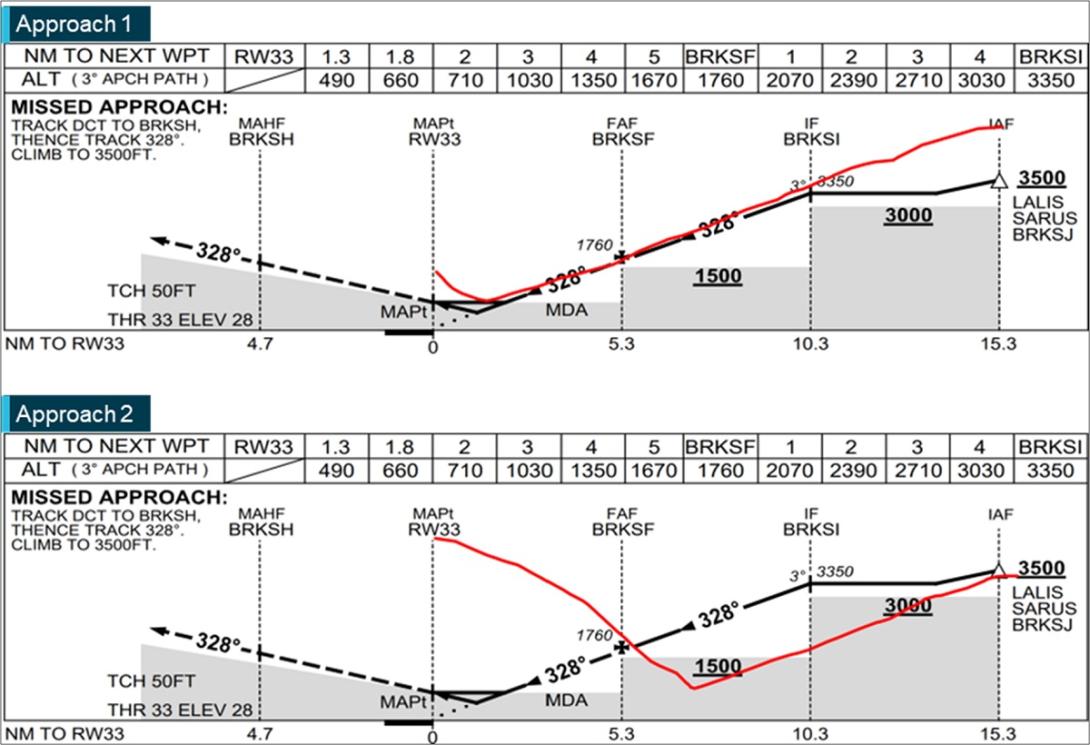
The pilots of a BAE 146 freighter aircraft which flew below minimum safe altitude during a night approach to Rockhampton were likely experiencing fatigue and were dealing with a high workload, an Australian Transport Safety Bureau investigation has found.
On the morning of 5 January 2023, two pilots were operating a Pionair Australia BAE 146-200 on a night freight flight from Brisbane to Rockhampton, Queensland.
At about 3:30am the crew began a straight-in, required navigation performance (RNP) approach to Rockhampton’s runway 33, but discontinued due to low cloud.
Following the missed approach, the crew climbed the aircraft to 4,500 ft and entered the holding pattern before descending to the minimum holding altitude of 3,500 ft.
“The captain’s normal practice for a straight-in approach was to have the aircraft descending to cross the initial approach fix at about 5,000 ft, and to continue descending to the next waypoint while remaining above the 3,000 ft minimum safe altitude for that segment of the approach,” ATSB Chief Commissioner Angus Mitchell explained.
“However, prior to this second approach, the flight crew were conducting the holding pattern at 3,500 ft.
“The aircraft subsequently passed through the initial approach fix on its second approach at that lower altitude, but the captain commenced descending as per their normal practice – resulting in the aircraft incorrectly descending along a profile consistent with being one approach segment further along than its actual position.”
The aircraft subsequently descended below the minimum safe altitude for the first two segments of the RNP approach to runway 33.
As the aircraft descended towards the minimum descent altitude in the second segment of the approach, the pilots recognised their low altitude, and commenced another missed approach.
At about the same time, the aircraft’s ground proximity warning system activated.
The ATSB found the captain commenced the second approach descent early, based upon their incorrect application of their preferred regular descent technique.
The first officer did not identify the early descent due to an incorrect mental model of the aircraft’s position in relation to the required flightpath.
“The ATSB found that due to the time of the approaches and inadequate sleep, both flight crewmembers were likely experiencing a level of fatigue known to adversely affect performance,” Mr Mitchell added.
“This, in combination with a period of high workload associated with the missed approach and second approach, led to the early descent and monitoring errors.”
The ATSB also found the operator’s flight crew rosters were within regulations, but they were irregular and disruptive to the flight crew’s sleep patterns.
“This adversely impacted the flight crew’s ability to obtain adequate sleep prior to the incident flight.”
The ATSB’s SafetyWatch initiative, which highlights broad safety concerns stemming from its investigation findings and occurrence data reported by industry, has improving the management of fatigue as one of its priorities.
“Managing fatigue is a shared responsibility. This incident emphasises the importance of operators providing predictable and stable rosters to support pilots in achieving adequate sleep,” Mr Mitchell concluded.
“It is equally important pilots monitor their own health and wellbeing to ensure they are well-rested, especially when conducting overnight operations.”
Read the report: Descent below minimum altitude involving British Aerospace BAE 146, VH-SFV, 15 km south of Rockhampton Aerodrome, Queensland, on 5 January 2023


